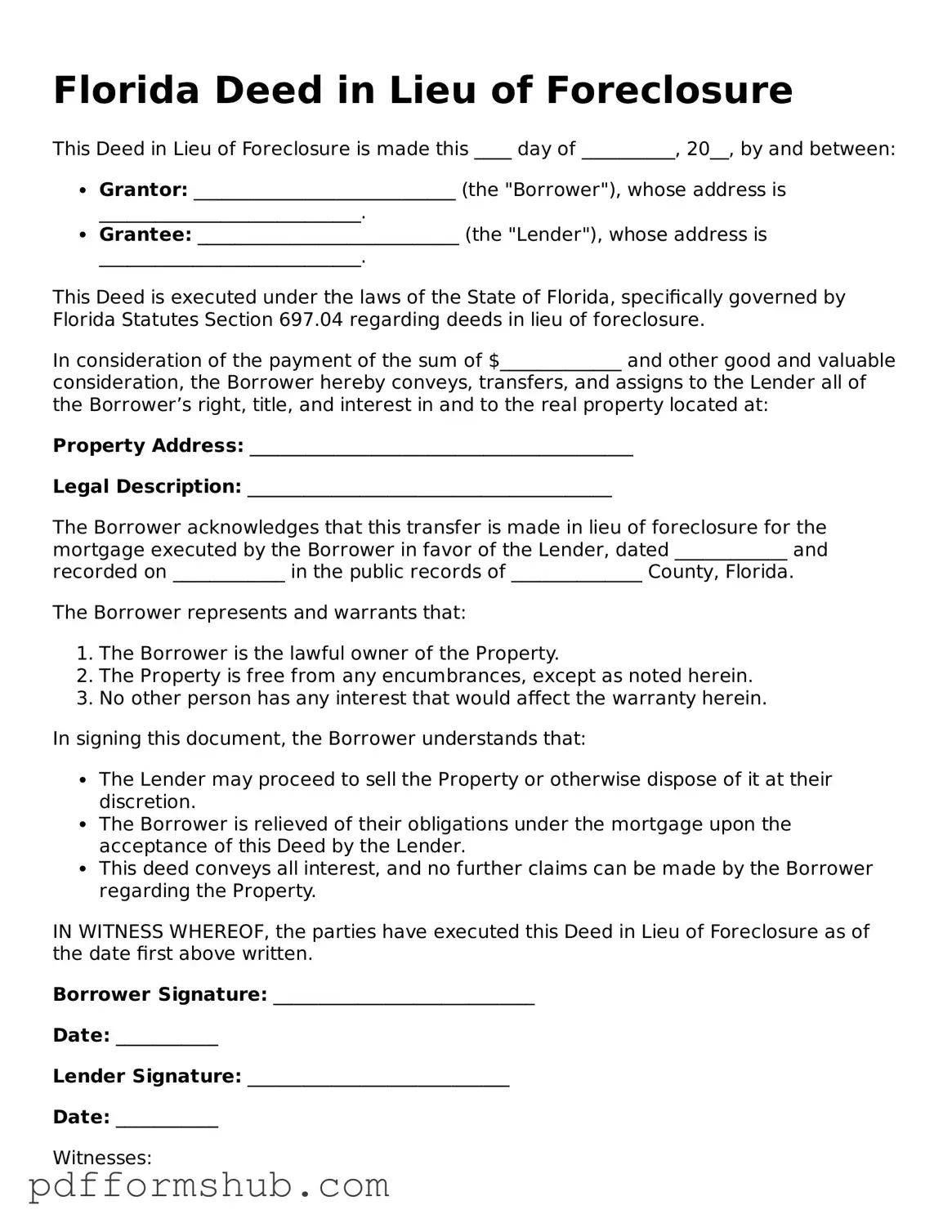Attorney-Verified Deed in Lieu of Foreclosure Form for Florida State
A Florida Deed in Lieu of Foreclosure is a legal document that allows a homeowner to voluntarily transfer ownership of their property to the lender, thereby avoiding the lengthy foreclosure process. This option can provide a fresh start for homeowners facing financial difficulties, as it typically results in less damage to their credit score compared to a traditional foreclosure. If you're considering this option, take the first step by filling out the form below.
Click the button below to get started.
Customize Form
